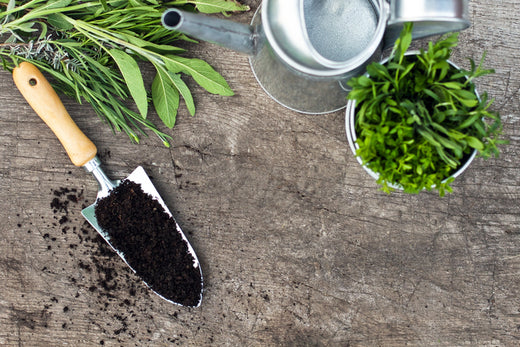A beautiful landscape design is much easier to obtain if you are willing to work within your own natural environment. The benefits of this include less time and money involved in your landscape projects because you are working with rather than against Mother Nature. In this post, we will discuss some ideas on how to help make your landscaping efforts pay greater gains, for the time and money you plan to invest into making your home’s exterior beautiful and inviting.
Address Drainage Issues
First and foremost, it is important to address any drainage issues around your primary structures, including your home of course, and any outlying buildings such as a garage, maintenance shed, etc. In some cases, simply adding the right plants can help keep the surrounding soil in place. In other cases, you might need to add soil and/or gravel to level out areas or even make use of drainage tile to ensure you stop flooding or washed out areas from occurring. Consider an area carefully, as it is better to make an initial investment in additional soil, gravel or tile rather than tasking plants and shrubbery with a drainage problem they can’t resolve on their own.
Conduct a Soil Test
All your landscaping efforts are much more likely to be successful if you first know the kind of soil you have to work with. If you choose plants that prefer the natural soil around your home, they have a better chance of thriving and you are less likely to have to redo much of your planting in the future, therefore saving you time and money. Could you amend the soil to plant whatever you like? Yes, but plants and shrubbery often have a tendency to skirt their roots around amended soil, leaving you without deeply rooted plants that have a tendency to die out, especially during times of weather extremes.
Work With Mother Nature
In areas where you don’t need to protect primary structures, consider trying to work with Mother Nature rather than against her. Do you have a low-lying area that frequently collects water? That might be the perfect spot for a beautiful rain garden. A group of strategically planted trees could become a natural pergola in a few years. Want more privacy? Rather than adding yards of fencing, consider adding some tall shrubbery, trees or even tall grasses — all can provide natural privacy fencing.
In addition, try to think of how an area will look 5 or even 10 years down the road. All those marvelous sun-loving flowers you planted near your property line won’t flourish too well after a neighboring tree grows and provides unwanted shade to half of your lawn.
Create a Thoughtful Design
There are those who somehow manage to pull off an eclectic look by adding various types of vegetation here and there as the whim strikes them. On the other hand, a lack of a comprehensive design often leaves a landscape looking like a group of mismatched items in disarray. In order to create the natural-looking harmony and continuity that is so pleasing to the eye, a well thought out landscaping design is probably the way to go. Native plant societies, university, and county extension offices, as well as local designers, are all good sources that can help you arrive at a comprehensive, thoughtful design for your property. Make sure you know the lighting and soil requirements of all your selections and build some flexibility in your plan, in case you cannot find anyone offering the exact plant you desire.
Creating the perfect landscaping design can often seem like painting a masterpiece, but the rewards you will reap from a design process that embraces an area’s natural environment should pay off handsomely in the future.

